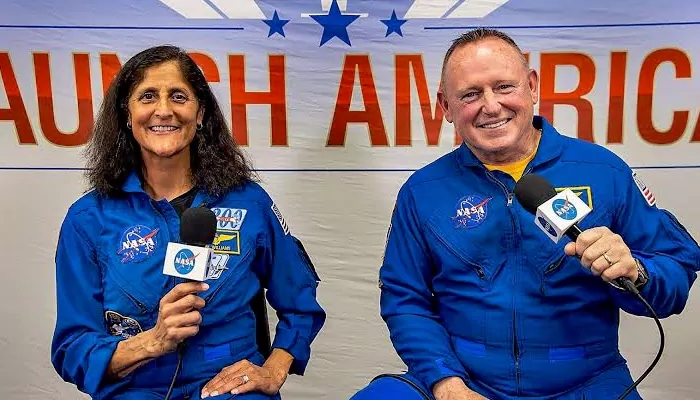
Here are today’s most important updates from the realm of Science and Space.
Saturn has 128 newly-discovered moons. Here they are color-coded by their MPEC release. Orange: MPEC 2025 E153, Purple: MPEC 2025-E154, Green: MPEC 2025-E155. pic.twitter.com/0aO6WXl7Ni
— Tony Dunn (@tony873004) March 12, 2025
(Credit: X/@tony873004)
Saturn has solidified its status as the planet with the most moons in our solar system, surpassing Jupiter with a total of 274 moons. This new milestone was made possible by the identification of 128 new moons orbiting Saturn, a finding officially recognised by the International Astronomical Union. All of the newly discovered moons are classified as "irregular moons," which are objects captured by Saturn early in the solar system's history. These moons are small, measuring only a few kilometers in diameter, and are likely fragments of larger moons broken apart by violent collisions with other Saturnian moons or passing comets. The high concentration of these small moons near the Mundilfari subgroup suggests that this region may have been the site of a significant collision in the past.

Byrnihat, a city on the border of Assam-Meghalaya, is in the headlines for emerging as the world's most polluted. The World Air Quality Report 2024 released by the Swiss firm IQAir mentions that Byrnihat has the most polluted air in the world. It houses major industries such as distilleries, iron and steel plants, cement factories, and beverage production units. In an area of approximately 49.5 square kilometers, it contains around 41 factories which emit huge amounts of particulate matter. Moreover, the lack of pollution control authority in the region and low enforcement by the authorities made the level of increased pollution unrecognised for a long time. The data also states that India is home to 13 of the 20 most polluted cities in the world, with Delhi being the most polluted capital city.

NASA astronauts Sunita Williams and Butch Wilmore are expected to return to Earth by March, 2025 following their lengthy stay on the International Space Station (ISS). Ahead of their return, experts have warned that it will not be a normal homecoming. Williams and Wilmore will face difficulties to adapt to Earth's gravity. Leroy Chiao, a former NASA astronaut, explained the challenges: “You basically lose the thick part of your skin,” stressing that weightlessness causes foot calluses to diminish. Human feet, or the soles, are perhaps the most bizarre consequence of living in environments that are nearly weightless. Moreover, dizziness and nausea are other side effects that astronauts encounter after returning home.
No Hurricane has ever crossed the Equator 🤯🤯🤯.
— Hisham (@h_eecham) June 16, 2024
hurricanes never track near the equator because neither the storm itself nor the prevailing winds that push it around can approach this reversal boundary
🎥 : Robert Rohde pic.twitter.com/gf2pYYldAf
(Credit: X/@h_eecham)
Hurricanes, also known as typhoons or cyclones, are powerhouse weather events that suck heat from tropical waters to fuel their fury. Hurricanes are like a vast spinning turbine fueled by warm, moist air. They tend to form in tropical seas where the waters are above 26 degrees Celsius. However, it's a curious fact that they very rarely approach the equator and - stranger still - never cross it. The reason for this hurricane-free equatorial zone is due to the Coriolis effect, a force that acts on our atmosphere because the Earth rotates faster at the equator than at the poles. This means that air currents and storms bend to the right in the northern hemisphere and to the left in the southern hemisphere, the degree to which depends on the air speed and size of the storm system.